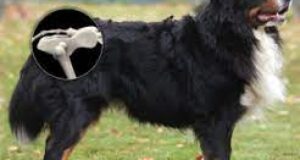When it comes to dog hip replacement, veterinarians often find themselves walking a tightrope. On one side, there’s the promise of renewed mobility, like a broken-winged bird soaring again. On the other, the lurking dangers that make the procedure a gamble—one that doesn’t always pay off.

The Silver Lining vs. The Storm Clouds
Dog hip replacement is often hailed as a miracle fix for severe hip dysplasia and arthritis, but like Icarus flying too close to the sun, there are risks that cannot be ignored. While success stories paint a picture of boundless fields and tail-wagging joy, the reality is more nuanced. Every surgery carries the shadow of potential complications, and hip replacement is no exception.
The Risks That Lurk Beneath
- Implant Rejection: A Body’s Betrayal
Just as an unwelcomed guest may be shown the door, a dog’s body can sometimes reject the implanted prosthetic. This reaction, though rare, can lead to inflammation, severe pain, and even the need for a second surgery. - Infection: A Silent Invader
Even with the best sterilization techniques, infections can creep in like thieves in the night. Once they take hold, they can compromise the entire implant, leading to additional treatments or complete removal. - Fractures: The Cracked Foundation
A house built on weak foundations is bound to collapse, and similarly, if the femur or pelvis cannot support the implant, it may lead to fractures. This can be particularly concerning in older dogs or those with underlying bone conditions. - Nerve Damage: The Broken Circuit
The hip is a hub of crucial nerves, much like an intricate web of power lines. If a nerve is inadvertently damaged during surgery, it can lead to partial or total loss of limb function, turning the dream of mobility into a nightmare. - Implant Loosening: The Shifting Sands
Over time, some implants fail to stay in place, much like roots that fail to anchor a tree against strong winds. This can cause pain, lameness, and require corrective procedures.

Veterinary Concerns: Between Ethics and Science
Veterinarians are not just mechanics fixing broken parts; they are caretakers of life. Many vets hesitate to recommend dog hip replacement unless absolutely necessary, as they weigh the risks against the benefits. The ethical dilemma is much like King Solomon’s wisdom—should the surgery be pursued if it comes with the possibility of pain and complications?
While some dogs bounce back like a phoenix rising from ashes, others endure prolonged rehabilitation with uncertain outcomes. Vets also caution against over-optimistic expectations from pet owners, who may see hip replacement as a guaranteed fix rather than a calculated risk.
The Road Less Traveled
Before embarking on the journey of dog hip replacement, pet owners must tread carefully. Understanding the risks, consulting experienced veterinarians, and considering alternative treatments like physical therapy or medication can sometimes be the wiser road. After all, not every aching hip needs a surgical remedy—sometimes, love, patience, and the right care can be the best medicine.
In the end, dog hip replacement remains a double-edged sword—a potential blessing wrapped in layers of caution. The decision should be guided by wisdom, not just hope, ensuring that our beloved companions walk the path to recovery, not regret.




